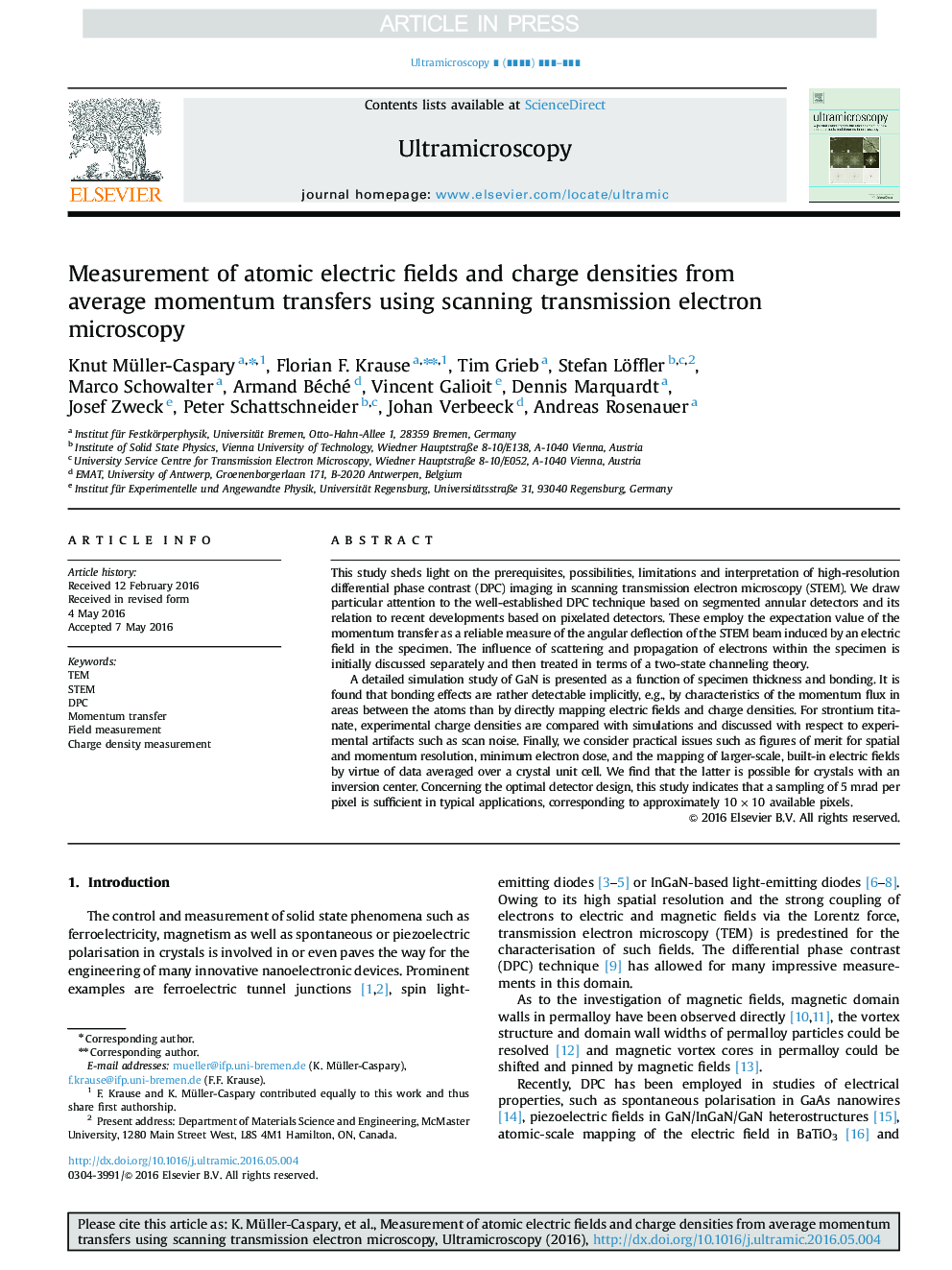| Article ID | Journal | Published Year | Pages | File Type |
|---|---|---|---|---|
| 5466843 | Ultramicroscopy | 2017 | 19 Pages |
Abstract
A detailed simulation study of GaN is presented as a function of specimen thickness and bonding. It is found that bonding effects are rather detectable implicitly, e.g., by characteristics of the momentum flux in areas between the atoms than by directly mapping electric fields and charge densities. For strontium titanate, experimental charge densities are compared with simulations and discussed with respect to experimental artifacts such as scan noise. Finally, we consider practical issues such as figures of merit for spatial and momentum resolution, minimum electron dose, and the mapping of larger-scale, built-in electric fields by virtue of data averaged over a crystal unit cell. We find that the latter is possible for crystals with an inversion center. Concerning the optimal detector design, this study indicates that a sampling of 5mrad per pixel is sufficient in typical applications, corresponding to approximately 10Ã10 available pixels.
Related Topics
Physical Sciences and Engineering
Materials Science
Nanotechnology
Authors
Knut Müller-Caspary, Florian F. Krause, Tim Grieb, Stefan Löffler, Marco Schowalter, Armand Béché, Vincent Galioit, Dennis Marquardt, Josef Zweck, Peter Schattschneider, Johan Verbeeck, Andreas Rosenauer,
